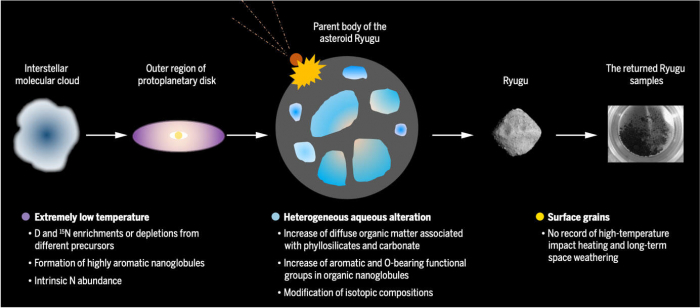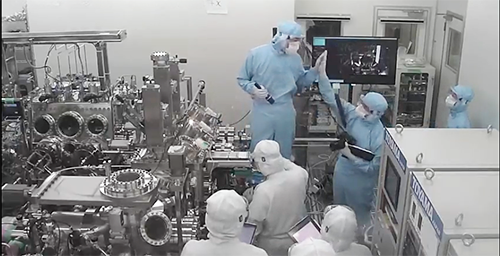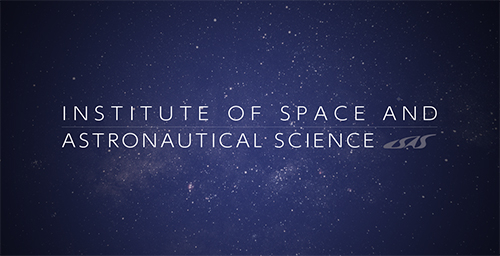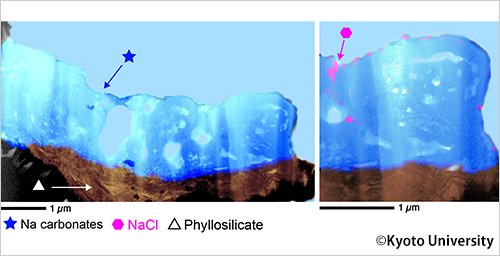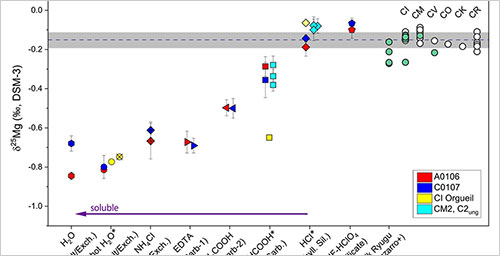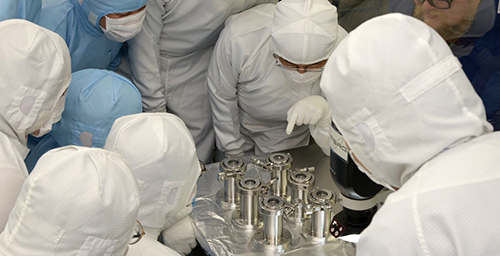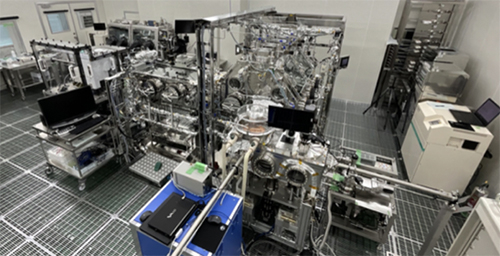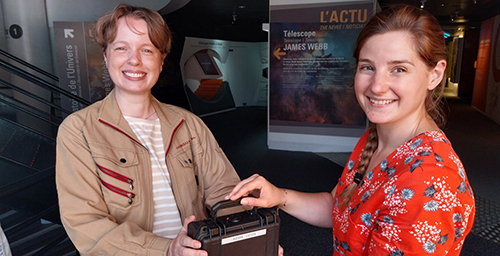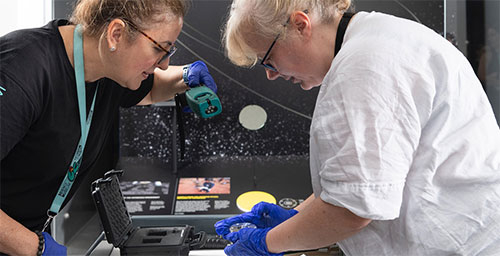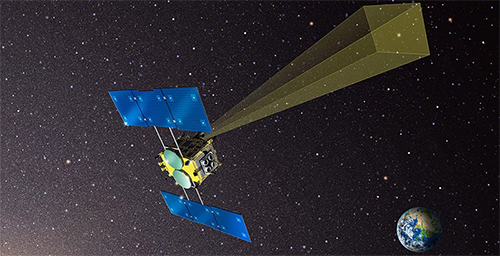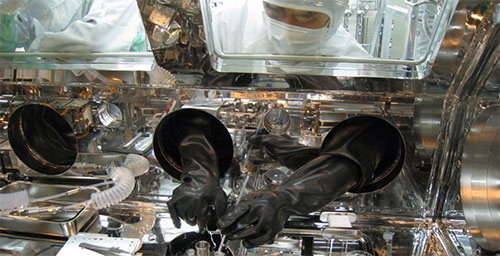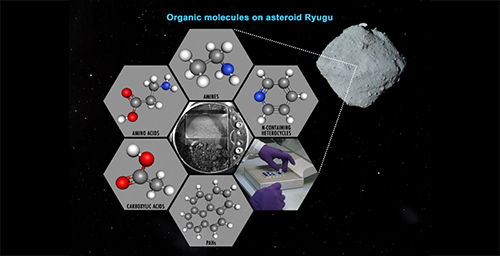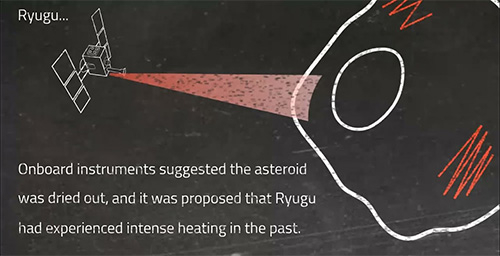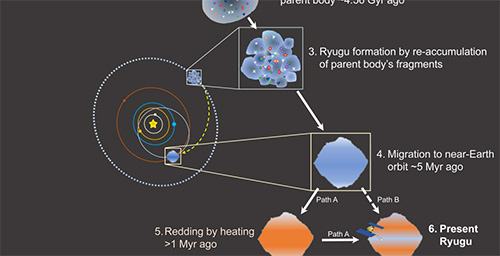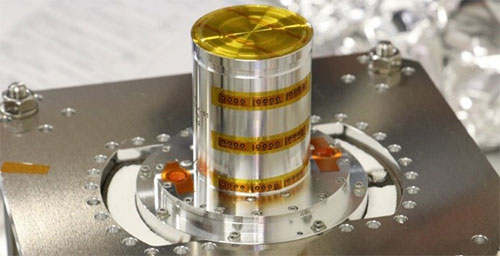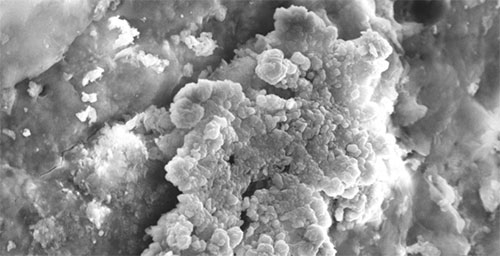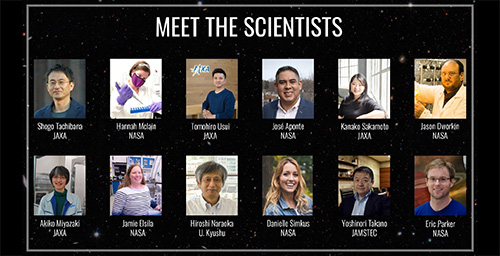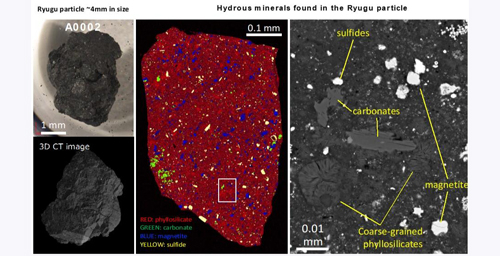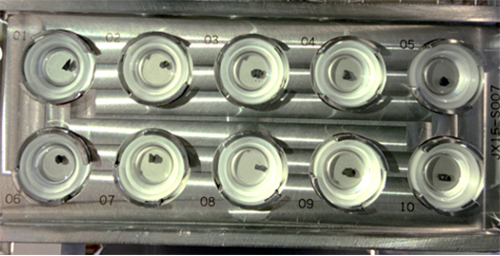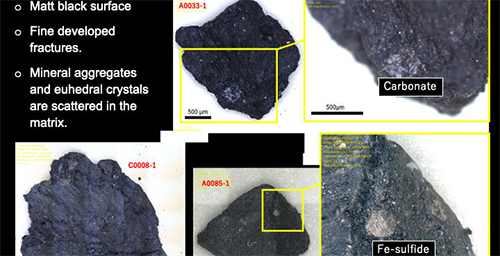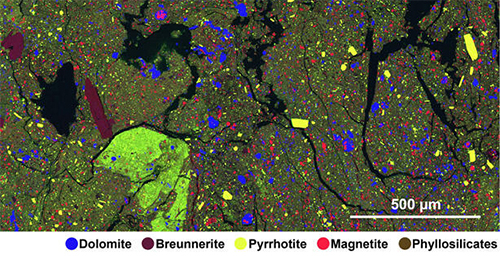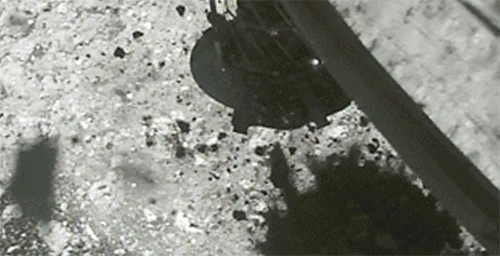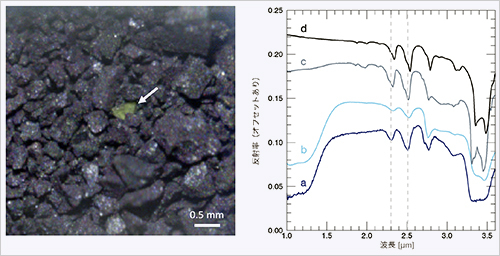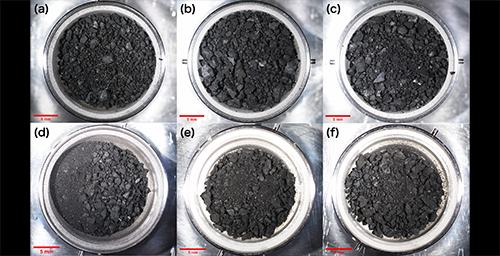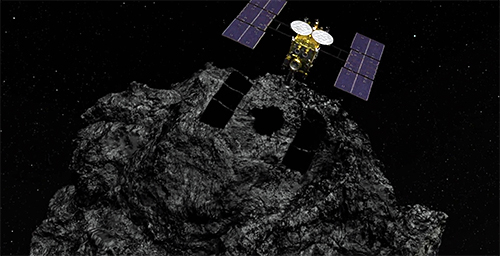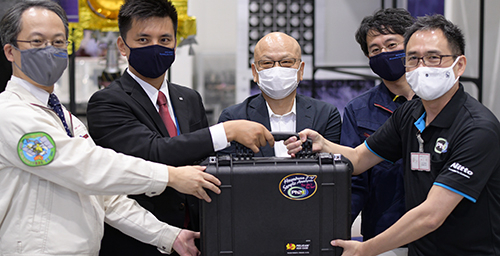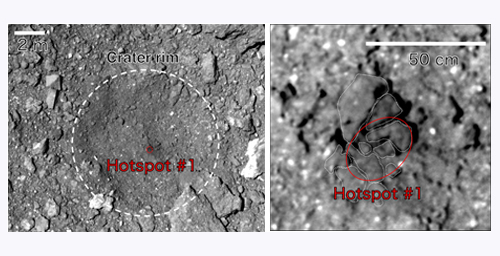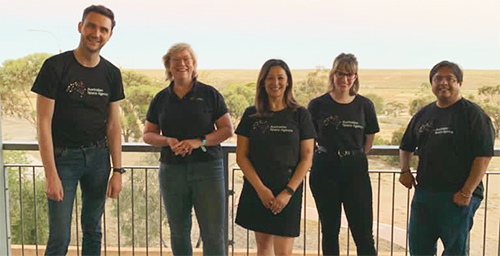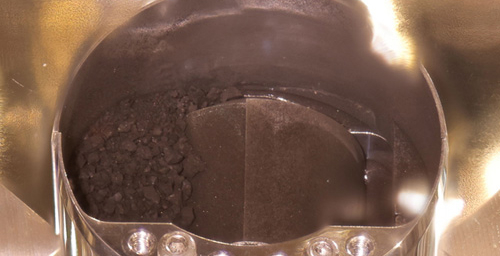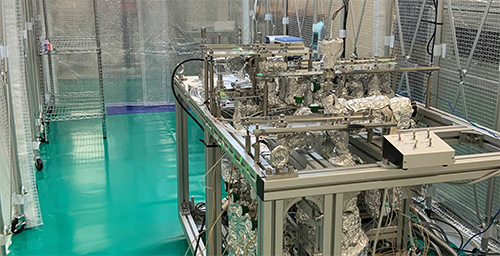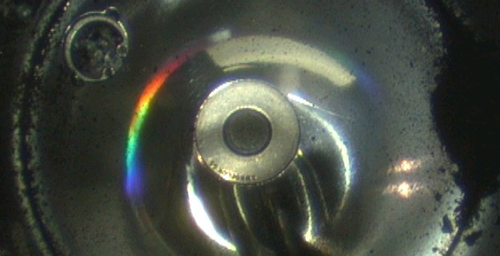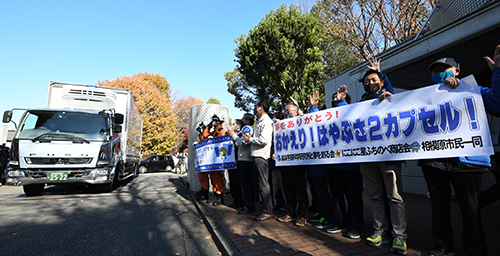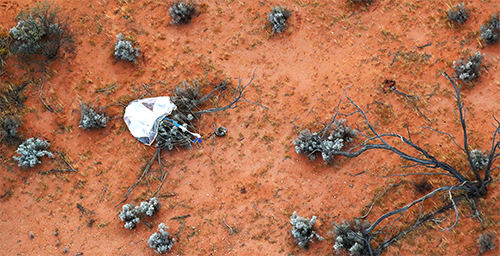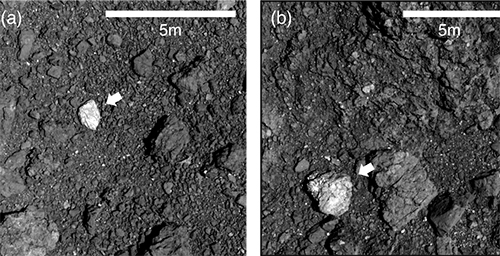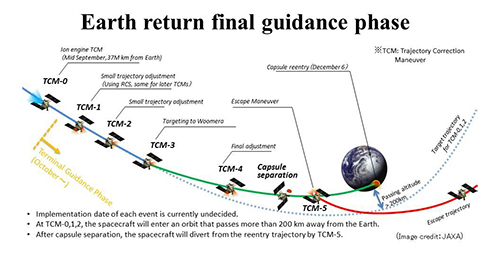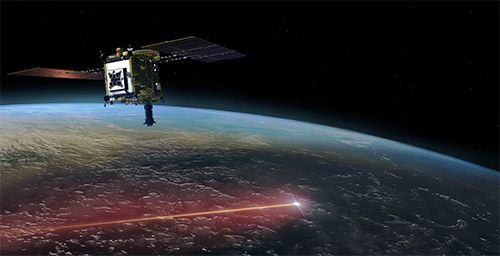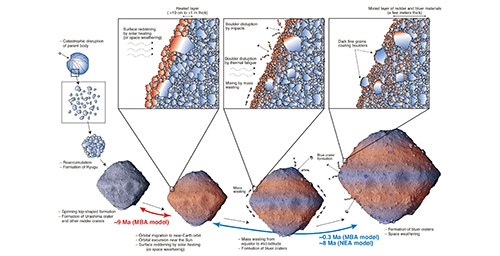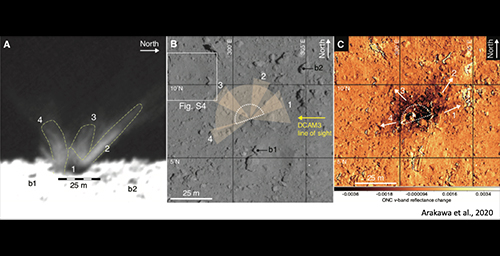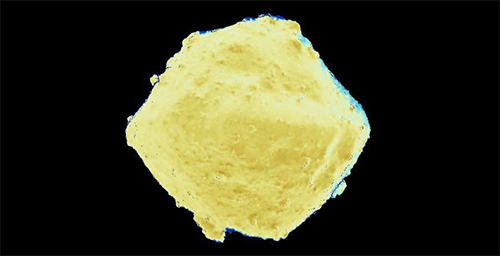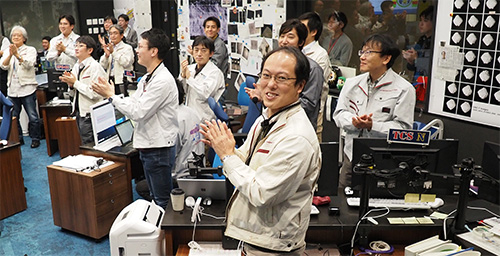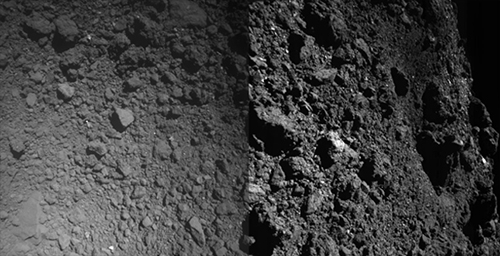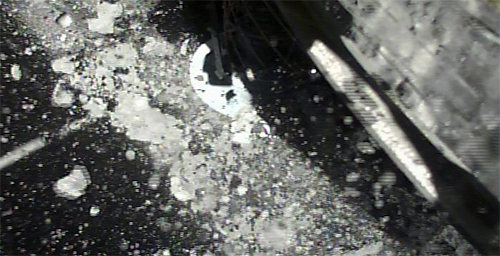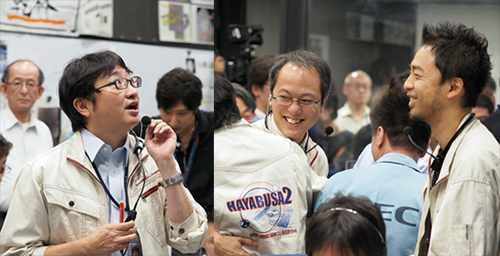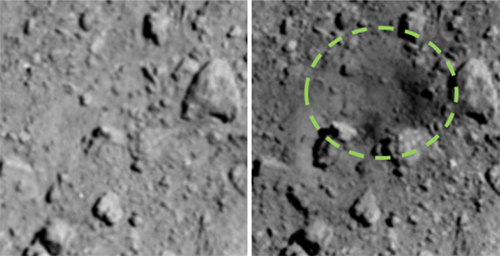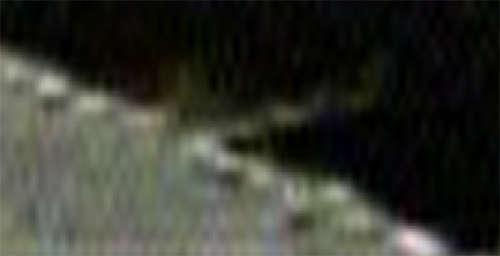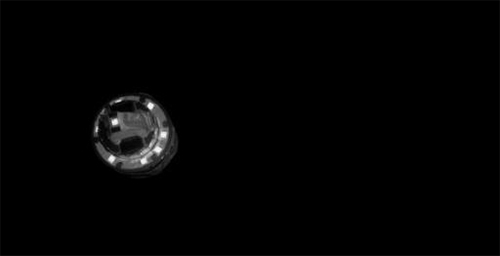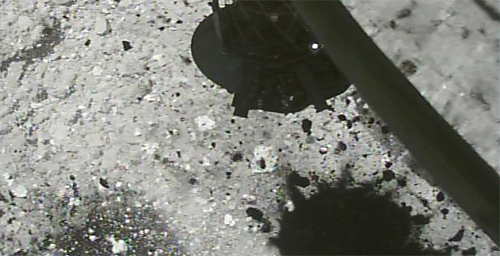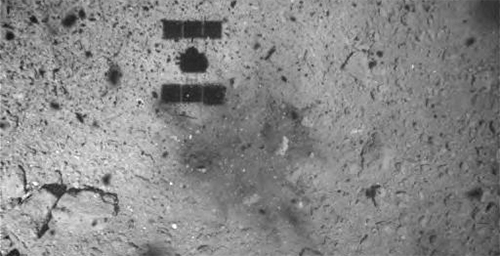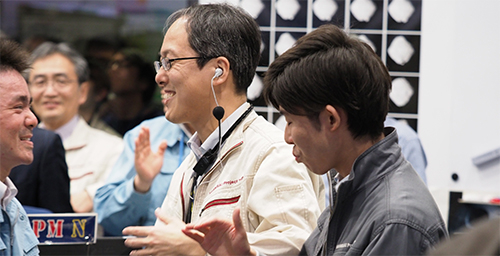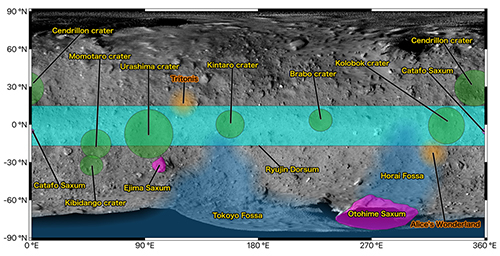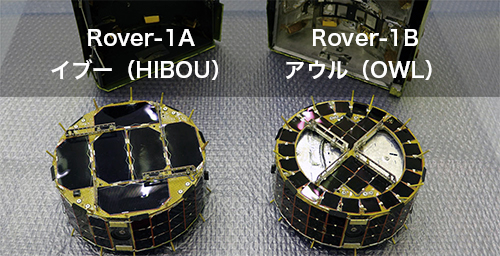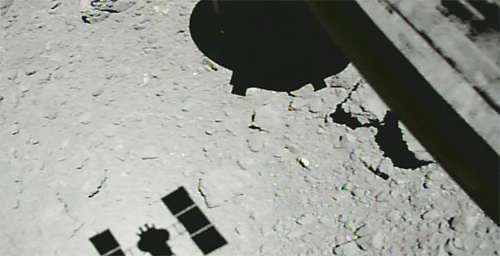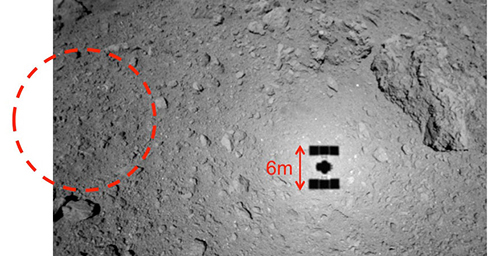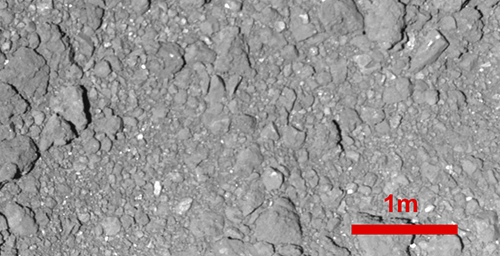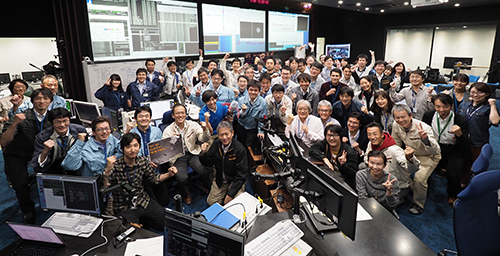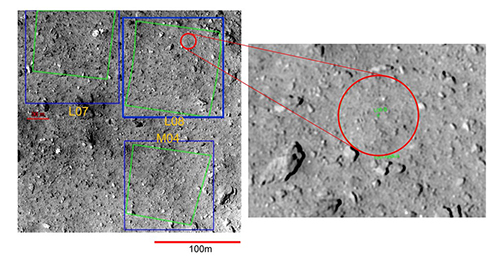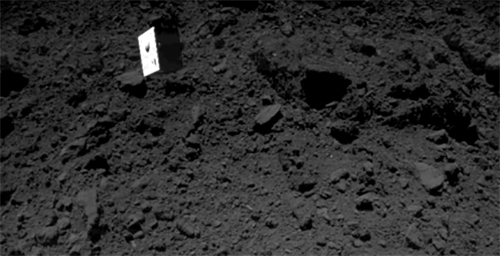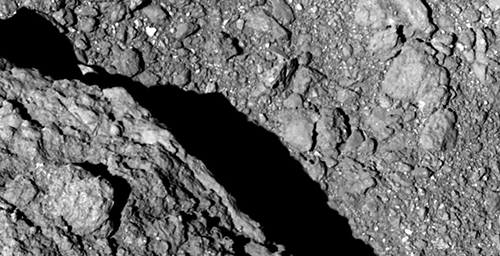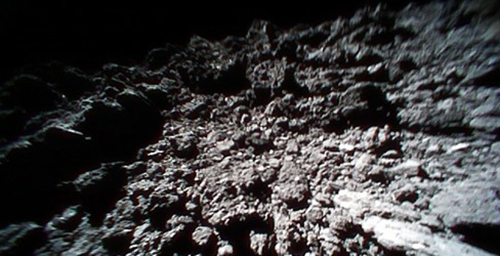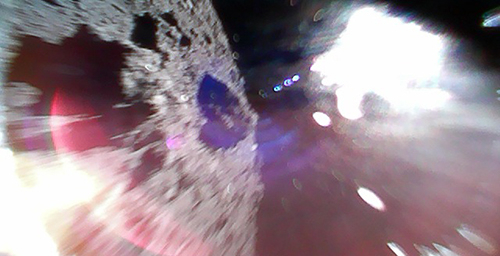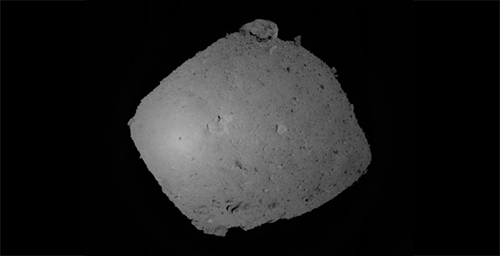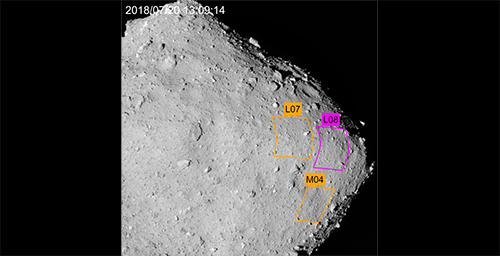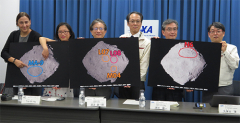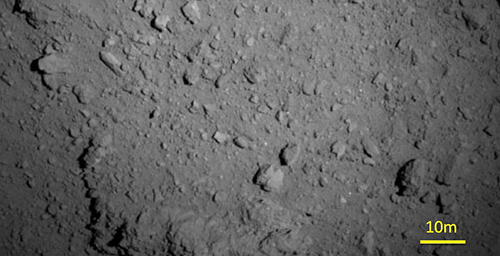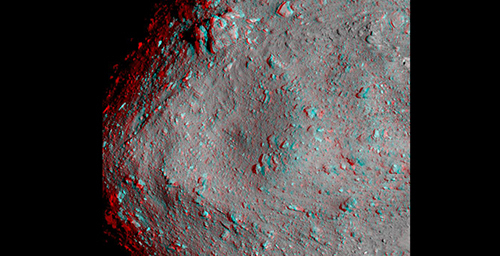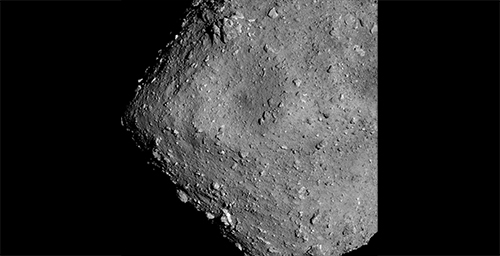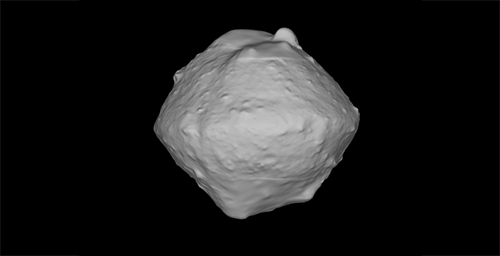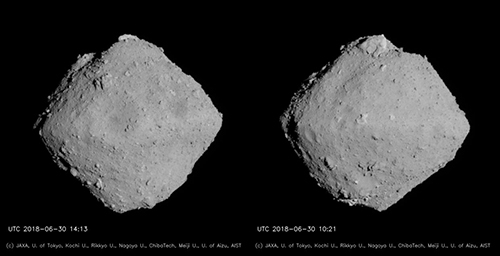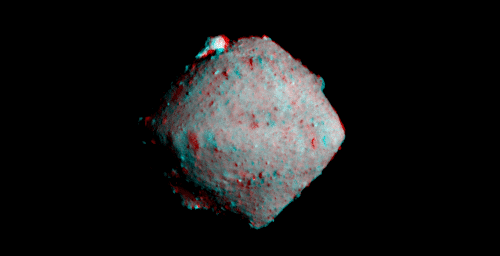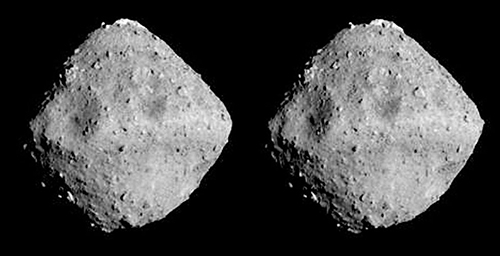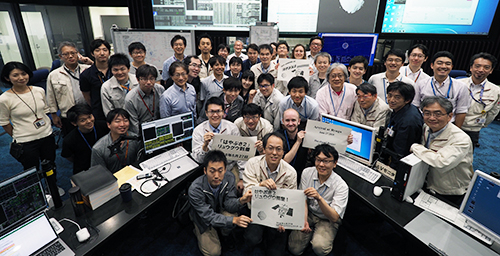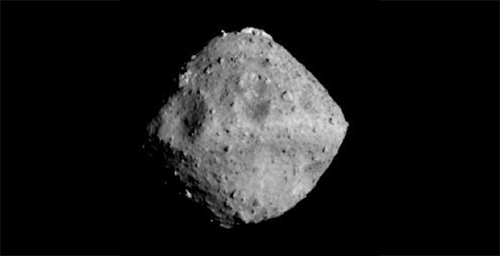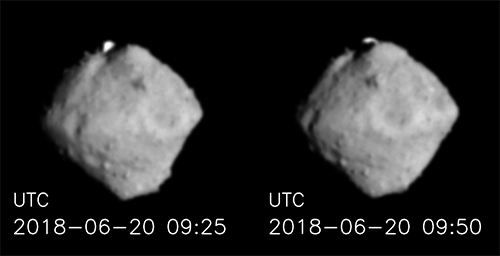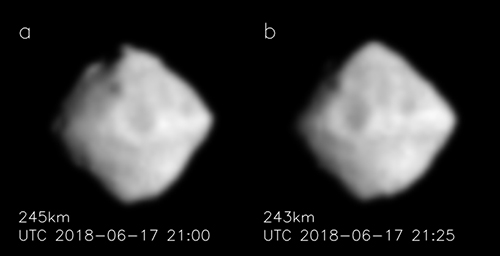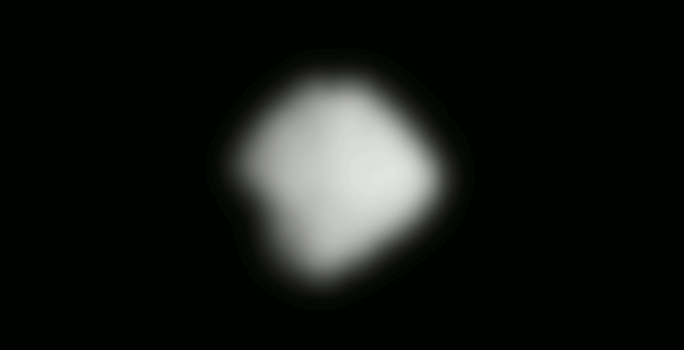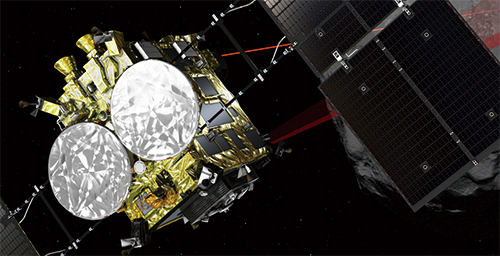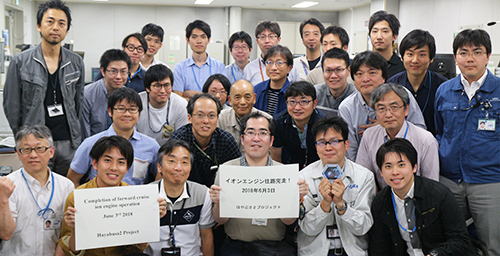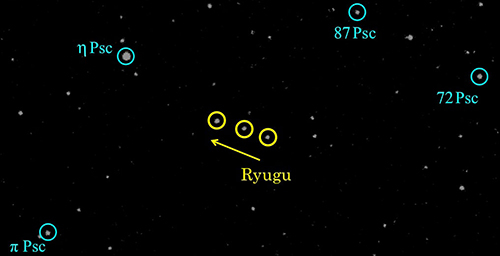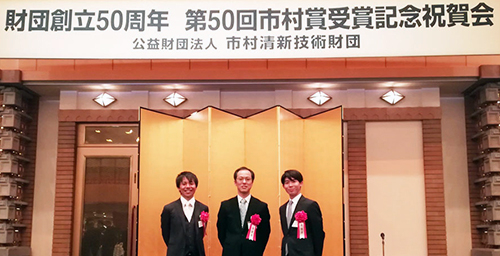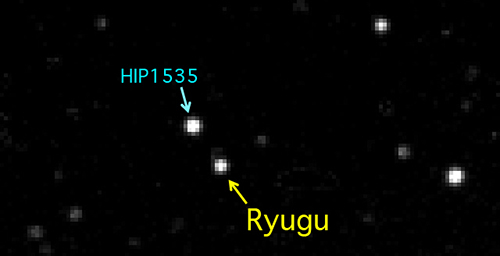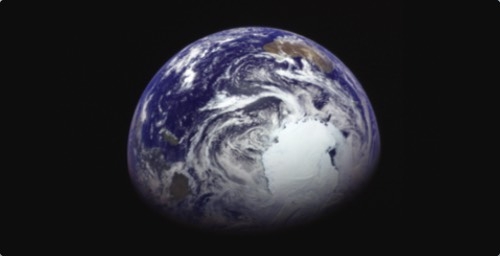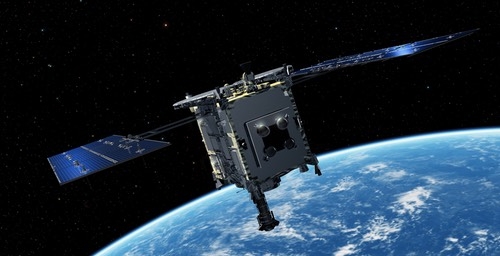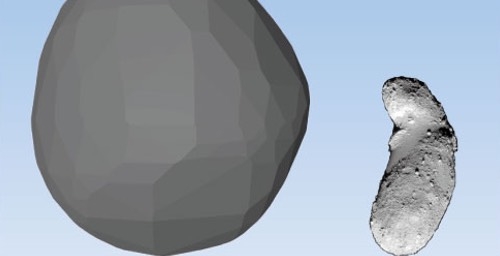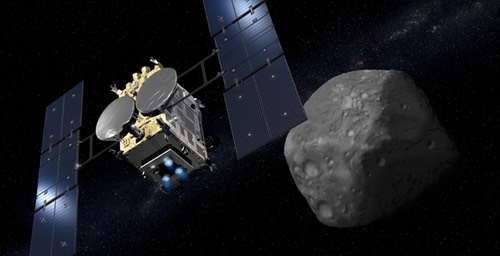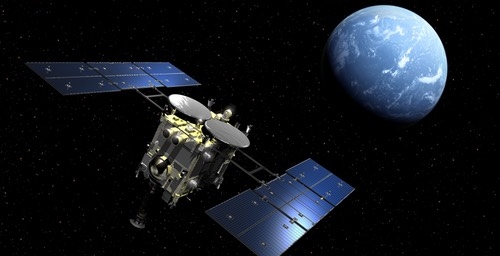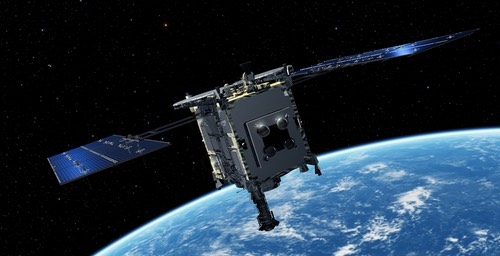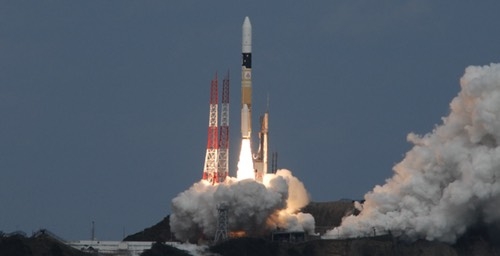© Yabuta et al. 2023
Figure 1: Formation and evolution of macromolecular organic matter during the evolution of asteroid Ryugu
Key points
- The chemical, isotopic and morphological compositions of the insoluble residues were almost consistent with those of the intact Ryugu grains, indicating that the dark organic macromolecules account for a major portion of Ryugu's organic matter (Note 1).
- The presence of macromolecular organic matter associated with phyllosilicates and carbonates in the Ryugu sample implies that much of the organic material was altered by low temperature aqueous processing on Ryugu's parent body (the larger asteroid from which Ryugu is thought to be a fragment). Macromolecular organic matter in the Ryugu samples is similar that that in primitive carbonaceous chondrites, while Ryugu's organic matter showed more diversity in composition than that in meteorites. The result provides further evidence that the organics were modified by variable degrees of aqueous alteration on Ryugu's parent body.
- No graphite-like material was found, which indicates that the Ryugu organic matter was not subjected to heating events on the parent body, such as long duration radiogenic thermal metamorphism and short-duration heating.
- The observed enrichments of deuterium (D) and/or nitrogen-15(15N) indicate that at least some of the organic matter in Ryugu samples was formed in low-temperature environments below -200℃ such as the interstellar medium or presolar nebula.
- Similarities and differences were found between the organic matter in the C-type asteroid Ryugu, and that observed in D-type asteroids and comets. This is believed to be the result of changes in the chemical reactions in each parent body, after the common source material in the solar nebula was incorporated into planetesimals (later minor bodies).
- Dark, macromolecular organic matter in carbonaceous asteroids, which is not related to the "present" bio-related molecules, could have contributed to the organic inventory available for the formation of habitable planetary environments.
Overview
Hayabusa2 Initial Analysis Organic Macromolecule team led by Professor Yabuta Hikaru (Hiroshima University) measured chemical, isotopic, and morphological compositions of macromolecular organic matter in samples of the asteroid Ryugu (37 grains ranging from 200 to 900 μm in size), which were returned by the spacecraft Hayabusa2. Their coordinated analysis by various microscopic techniques showed that the chemical compositions of macromolecular organic matter in the Ryugu sample are similar to those in primitive carbonaceous CI (Ivuna-type) and CM (Mighei-type) chondritic meteorites. The morphology of the organic matter includes nanoglobules and diffuse carbon associated with phyllosilicate and carbonate minerals, which is the evidence of the evolution of organic matter during reaction with liquid water on Ryugu's parent body (the larger asteroid from which Ryugu is thought to be a fragment). No graphite-like material was found, which indicates that the Ryugu organic matter was not subjected to heating events on the parent body, such as long duration radiogenic thermal metamorphism and short-duration heating.
A number of carbonaceous grains in the Ryugu samples showed extreme deuterium (D) and/or nitrogen-15(15N) enrichments or depletions. These isotopic features are not observed from terrestrial organic matter and indicate an origin in extreme cold environment (i.e. below negative 200 degrees Celsius). The results indicate that the organic matter in Ryugu samples is extraterrestrial origin and at least some of the organic matter were derived from the interstellar medium or presolar nebula.
The Organic Macromolecule team examined intact Ryugu grains and insoluble carbonaceous residues isolated by acid treatment of the Ryugu samples. The measurements showed that the insoluble residues recovered in high yield was dark-colored, organic solids. The chemical, isotopic and morphological compositions of the insoluble residues were almost consistent with those of the intact Ryugu grains, indicating that the dark organic macromolecules account for a major portion of Ryugu's organic matter. This could explain the low albedo of the asteroid's surface.
This study has first proved the direct link between macromolecular organic matter in the carbonaceous asteroid and that in primitive carbonaceous chondrites. More specifically, organic matter in Ryugu samples showed more diversity in chemical, isotopic, and morphological compositions than that in meteorites. The result provides further evidence that the organic matter formed in interstellar cloud and solar nebula were modified by variable levels aqueous alteration on Ryugu's parent body (Figure 1). There is no obvious difference in organic compositions between Ryugu grains collected at the first and second touchdown sites. This indicates that the organic matter formed during (or before) the Solar System's formation is preserved in the surface samples of Ryugu and escaped solar wind, impacts and heating by sunlight on the asteroid surface.
Paper title:Macromolecular organic matter in samples of the asteroid (162173) Ryugu
Journal:Science
DOI:10.1126/science.abn9057
For more information, please see the JAXA press release.

